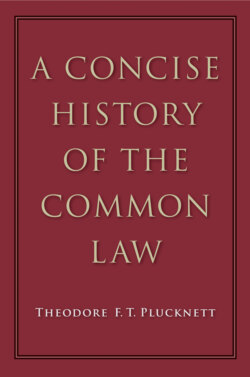Читать книгу A Concise History of the Common Law - Theodore F. T. Plucknett - Страница 63
На сайте Литреса книга снята с продажи.
RESTORATION OF CHURCH AND PREROGATIVE
ОглавлениеThe reign of Charles II saw the re-establishment in a harsher form of the Church of England, and the short reign of James II witnessed a rapid crisis. The determination of that monarch to pursue a religious policy which was contrary to that solemnly laid down by Parliament in a long series of statutes was the immediate cause of his fall. It may have been that his project of complete toleration for Roman Catholics as well as Dissenters was intrinsically an advance upon the partisanship of the Church as represented in Parliament. But it is impossible to discuss the merits of the policy when the methods of its promotion were so drastic and so completely contrary to the spirit of contemporary institutions. James II claimed that by his prerogative he could dispense individual cases from the operation of a statute; more than that, he even endeavoured to suspend entirely the operation of certain of the religious laws. Upon this clear issue the conflict was fought out. After an ineffective show of military force James II retired to France, William III of Holland was invited by Parliament to become joint ruler with his wife, Mary II, James’s daughter, and so “the great and glorious revolution” was accomplished. The terms of the settlement were embodied in the last great constitutional documents in English history, the Bill of Rights (1689) and the Act of Settlement (1701).
